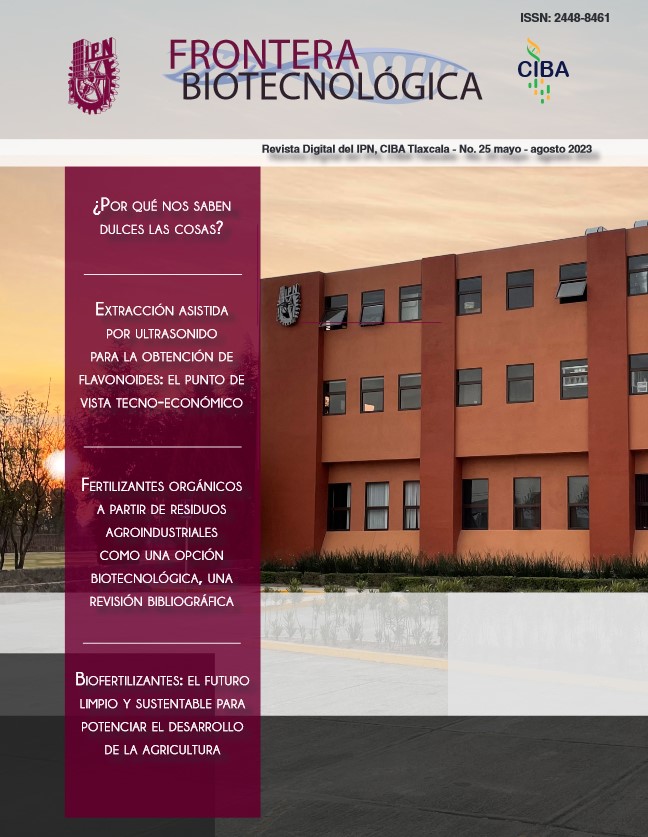¿Por qué nos Saben Dulces las Cosas?Quick submit
Keywords:
Taste, Sweet taste receptor, Synthetic sweetenerAbstract
Since ancient times, human beings have had an affinity for consuming sweet foods, today a wide range of foods that
give this type of flavor are consumed, such as confectionery products, sugary drinks, baked goods, among others. These
foods have been enriched with sweeteners, which are molecules that can activate the sweet taste. Thanks to the
characteristics of these sweeteners and their interaction with receptors on the tongue, humans can taste the sweetness of
many foods. In this work, the important role of the sweet taste receptor and the most used sweeteners in the food
industry will be discussed.
References
Anton SD, Martin CK, Han H, Coulon S, Cefalu WT, Geiselman P, Williamson D (2010). Effects of stevia,
aspartame, and sucrose on food intake, satiety, and postprandial glucose and insulin levels. Appetite 55:1 37-43.
Assadi FM, Maillet EL, Radek JT, Quijada J, Markley JL, Max M (2010). Key amino acid residues involved in multi-point
binding interactions between brazzein, a sweet protein, and the T1R2–T1R3 human sweet receptor. Journal of molecular
biology 398:4 584-599.
Badui S (2016). Química de los alimentos. México, Pearson Educación.
Brandle JE, Richman A, Swanson AK, Chapman BP (2002). Leaf ESTs from Stevia rebaudiana: a resource for gene discovery in diterpene synthesis. Plant molecular biology 50:4 613-622
Downloads
Published
How to Cite
Issue
Section
License
Copyright (c) 2024 Instituto Politécnico Nacional

This work is licensed under a Creative Commons Attribution-NonCommercial-NoDerivatives 4.0 International License.
Eres libre de:
- Compartir : copiar y redistribuir el material en cualquier medio o formato.
- El licenciante no puede revocar estas libertades siempre que cumpla con los términos de la licencia.
Bajo los siguientes términos:
- Atribución : debe dar el crédito apropiado , proporcionar un enlace a la licencia e indicar si se realizaron cambios . Puede hacerlo de cualquier manera razonable, pero no de ninguna manera que sugiera que el licenciante lo respalda a usted o su uso.
- No comercial : no puede utilizar el material con fines comerciales .
- Sin derivados : si remezcla, transforma o construye sobre el material, no podrá distribuir el material modificado.
- Sin restricciones adicionales : no puede aplicar términos legales ni medidas tecnológicas que restrinjan legalmente a otros hacer cualquier cosa que la licencia permita.
Avisos:
No tiene que cumplir con la licencia para elementos del material que sean de dominio público o donde su uso esté permitido por una excepción o limitación aplicable .
No se dan garantías. Es posible que la licencia no le otorgue todos los permisos necesarios para el uso previsto. Por ejemplo, otros derechos como publicidad, privacidad o derechos morales pueden limitar la forma en que utiliza el material.
Para más información consulta el sitio de Creative Commons



